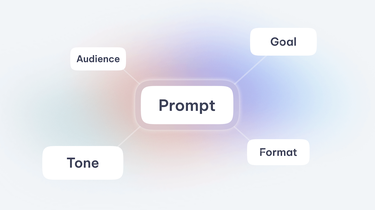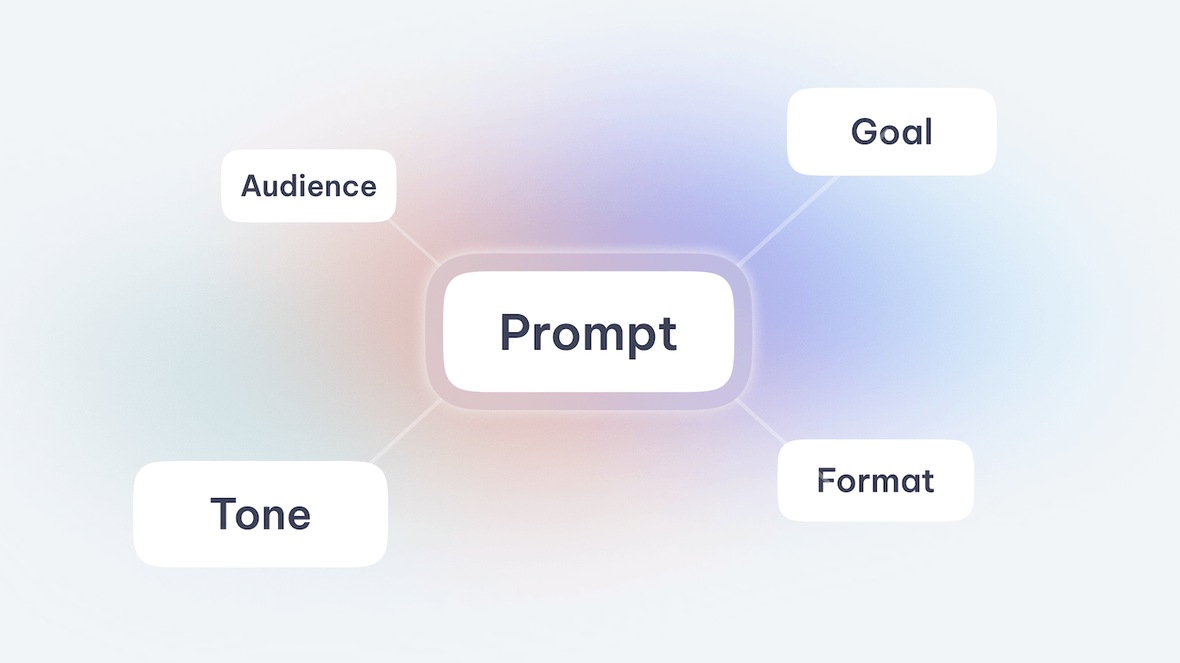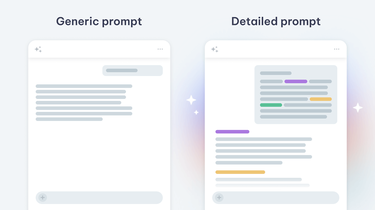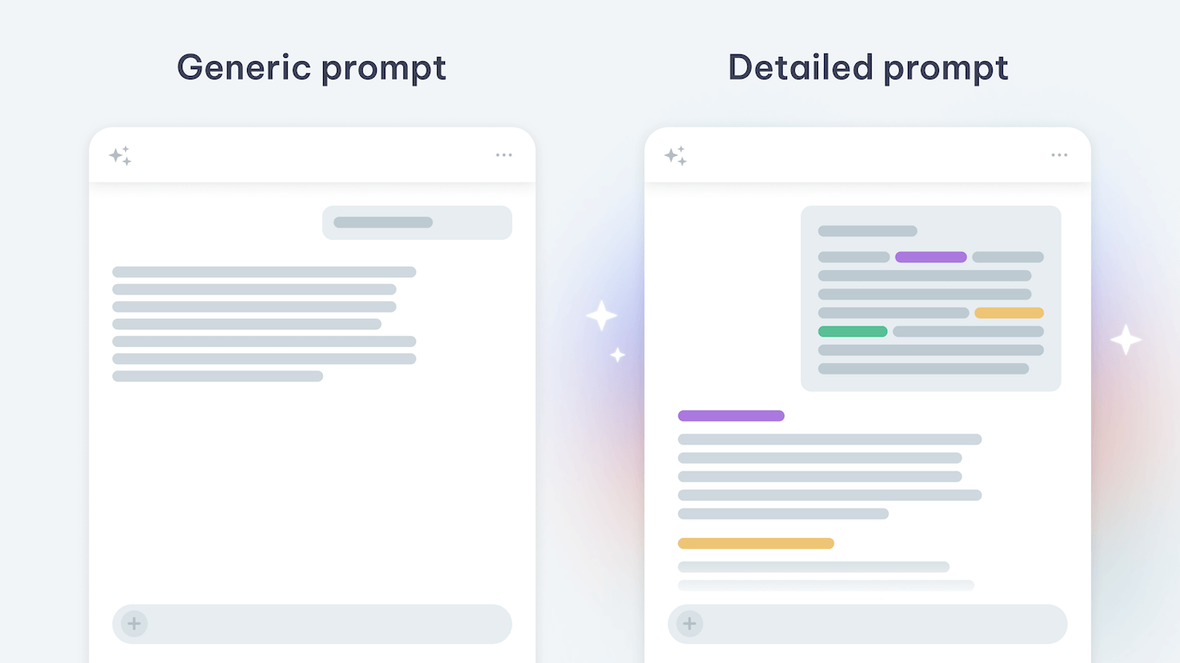How to create the best prompts for AI tools

Have you ever asked an AI tool for something and received a response that was… fine? Maybe it was generic, slightly off-topic, or just missed the spark you were hoping for. It’s a common experience, but it’s not a limitation of the technology. It’s a matter of communication.
Think of a powerful AI as the world’s most knowledgeable, capable, and literal-minded intern. It can do almost anything you ask, but it won’t guess your intentions. It needs a great set of instructions. Learning to write those instructions—what we call prompts—is the single most important skill for getting incredible results from AI.
As pioneers who built some of the first commercially available generative AI tools, we've seen this firsthand. We’ve designed our platforms to be incredibly responsive, but the quality of the output will always be a reflection of the quality of the input. This guide is here to turn you from a casual user into a confident director of your AI tools. Let's get started.


First, let's understand what a prompt really is
A prompt isn’t just a question. It's a command, a set of constraints, and a creative brief all rolled into one. Simply asking an AI to "write about marketing" is like walking into a restaurant and saying, "I'm hungry." You'll get food, but it probably won't be the exact meal you were craving.
An effective prompt is more like handing a chef a detailed recipe. It specifies the ingredients (the information), the cooking method (the format), and the final presentation (the tone). The more clarity you provide, the closer the AI will get to your vision on the first try.
The core principles of an effective prompt
Mastering prompts is about layering simple instructions together. Once you get the hang of these four principles, you'll be able to construct powerful prompts for any task, from drafting an email to generating creative fiction.
Be specific and clear
Ambiguity is the enemy of good AI output. The model doesn’t share your brain, so it can’t fill in the gaps with assumptions. You need to provide the details.
- Vague prompt: "Write a summary of our company's quarterly report."
- Specific prompt: "Summarize the key financial highlights from our Q3 2023 investor report. Focus on revenue growth, new customer acquisition, and the profit margin for the enterprise software division. The summary should be under 250 words."
See the difference? The second prompt leaves no room for interpretation and sets the AI up for success.
Provide context
Context is the "why" behind your request. Who is this for? What is the ultimate goal? Giving the AI this background information helps it tailor the response appropriately.
Imagine you need a social media post. Without context, the AI doesn't know if it's for LinkedIn, TikTok, or a private Facebook group. Each requires a wildly different style.
- Good prompt: "Write three potential tweets announcing our new product, the 'Auto-Watering Smart Pot'."
Excellent prompt: "Our company sells smart home gadgets to tech-savvy millennials. Our brand voice is witty and slightly sarcastic. Write three potential tweets announcing our new product, the 'Auto-Watering Smart Pot,' which solves the problem of killing houseplants. Include the hashtag #PlantParenting."


Define the persona and tone
This is where the magic happens. You can instruct the AI to adopt a specific persona, which dramatically influences the style, vocabulary, and structure of the response. This is your chance to get creative.
Ask the AI to act as a certain character or professional. For example:
- "Act as a seasoned financial advisor and explain the concept of compound interest to a 20-year-old."
- "Adopt the persona of a world-weary 1940s detective and describe a simple trip to the grocery store."
"Write in the voice of a confident, encouraging fitness coach to create a motivational paragraph for someone starting a new workout plan."
Set constraints and define the format
Finally, tell the AI exactly what you want the final output to look like. This helps manage the structure and length, ensuring the result is immediately usable. As one of the first platforms to offer robust controls for output formatting, we know how critical this is.
Be explicit about your needs:
- "Present the information in a table with three columns."
- "Write the output as a bulleted list."
- "The response should be a formal email with a subject line."
- "Limit the entire response to no more than 150 words."
A word on iteration: your first prompt is rarely your last
It's important to be realistic. Even with a perfect prompt, the first output might only be 90% of the way there. That's not a failure; it's part of the collaborative process.
Think of it as a conversation. If the AI's response isn't quite right, don't start over. Refine your prompt. Tell it what to change. For example: "That's good, but can you make the tone more formal?" or "Could you expand on the second bullet point?"
This iterative dance is where the best work gets done. And as we continue to push the boundaries of what's possible, our tools are constantly being updated to better understand these follow-up instructions, making the refinement process smoother with every release.


You're now the director, not just the audience
Mastering prompts transforms your relationship with AI. You move from being a passive recipient of information to the active director of a powerful creative and analytical engine. You are in control.
The best way to learn is by doing. Take these principles and play. Experiment with wild personas, push the boundaries with complex requests, and see what you can create. We built these tools to be an extension of your own creativity and intellect.
Now, go make something amazing.
Related articles
You deserve a better browser


Press Contacts!
Our press team loves working with journalists from around the world. If you’re a member of the media and would like to talk, please get in touch with us by sending an email to one of our team members or to press-team@opera.com



